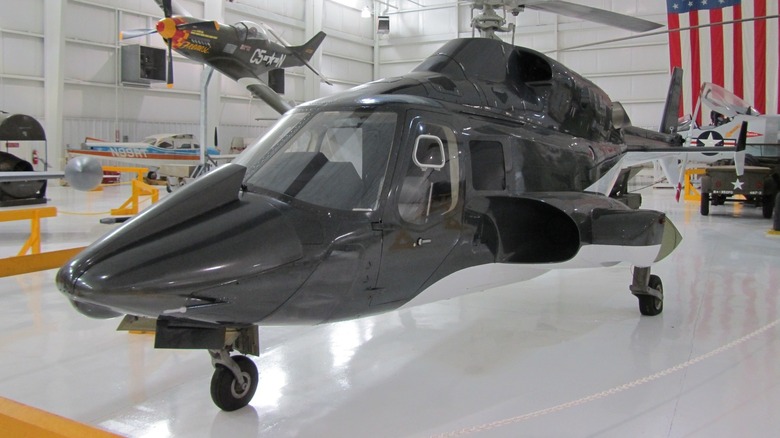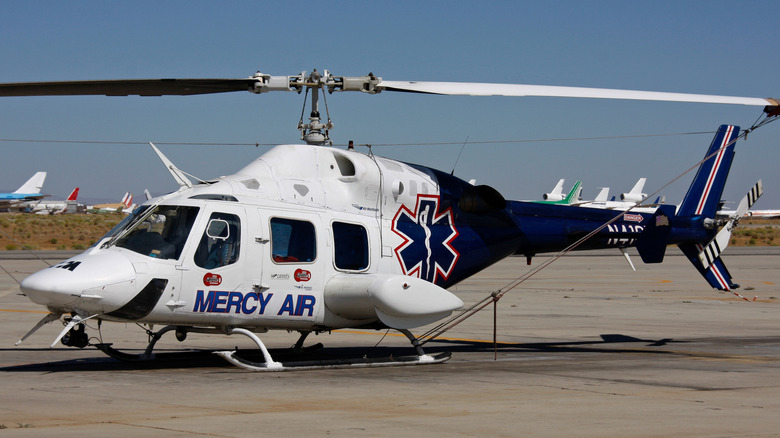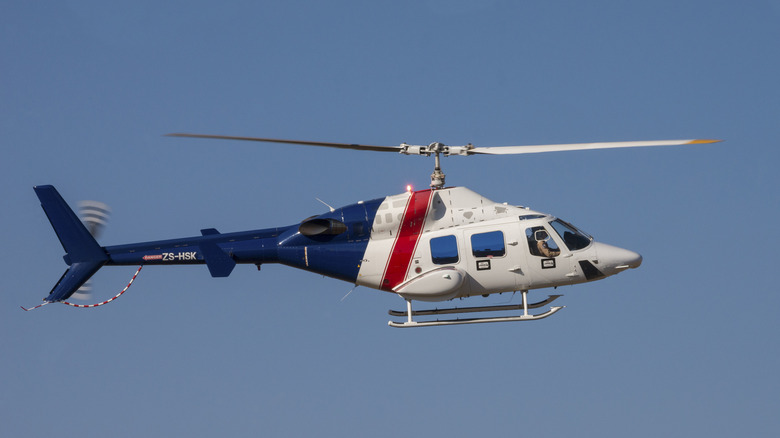What Helicopter Was TV's Airwolf Based On?
If you were a kid from the 1980s, chances are high that you grew up watching at least one TV show that featured a vehicle as an important protagonist. Car enthusiast kids had "Knight Rider," which aired on TV between 1982 and 1986 and featured KITT, an indestructible, talking 1982 Pontiac Firebird Trans Am (which happens to be one of the most hated Pontiac models ever). KITT was loaded with features such as artificial intelligence, an electronic jamming system, and the legendary "turbo boost" mode.
Motorcycle lovers had 1985's short-lived "Street Hawk," which put a futuristic, rocket-powered motorcycle front and center. Kids fascinated by flying objects and aviation had "Airwolf" (1984 to '87), which featured a sleek, black helicopter outfitted with supersonic engines, stealth capabilities rivaling that of the F-22, and enough firepower to give even the best attack helicopters an inferiority complex.
When "Airwolf" debuted in 1984, the series stood out for taking the concept of a high-tech vehicle to the skies. The series derived its name from the Airwolf helicopter, a prototype military aircraft with capabilities never seen before on a helicopter. Its arsenal of weapons included bunker-busting machine guns, a plethora of air-to-surface missiles, and a powerful laser beam. The "Airwolf" helicopter could also tap into enemy communications and become invisible to enemy radar, making it an immediate fan favorite. What most kids of the era may not have known was that there was a very real helicopter underneath the Airwolf's armor. It was called the Bell 222 and had slightly less spectacular features and capabilities compared to its on-screen avatar.
Everything to know about the Bell 222 helicopter
When "Airwolf" hit television screens in the mid-80s, the Bell 222 was a new, state-of-the-art machine. The 222 was certified for civilian use by the Federal Aviation Agency (FAA) in 1979 and first flew a year later. While it might not be as spectacular as the fictional Airwolf, the Bell 222 did come with its own share of highlights.
To begin with, it was first U.S.-built light helicopter with twin-turbine engines. It was also the first helicopter certified for Instrument Flight Rules (IFR) operations. This certification meant that a single pilot could legally fly the Bell 222 in bad weather or low visibility with the aid of its cockpit instruments.
Bell made several variants of the 222, which included the Bell 222, the 222A, and the Bell 222B. For those wondering, the helicopter used in "Airwolf" was a Bell 222A, which was similar to the original. The later Bell 222B featured a more powerful Textron Lycoming LTS 101-750C-1 turboshaft engine and several other improvements like a taller main rotor mast, larger narrow-chord blades and tail rotors, as well as a longer tail boom. Bell is reported to have manufactured a total of 188 Bell 222 series helicopters between 1980 and 1991. As of 2024, only 59 of those remain in service.
The tragic fate of the Bell 222 used in 'Airwolf'
The Bell 222 helicopter used in "Airwolf" was one of the last 222A models built by Bell. The helicopter bore the registration number N3176S and was owned by JetCopters, an aviation firm based out of California. In 1987, shortly after the show ended, the owners sold it to a German aviation firm, Hubschrauber-Sonder-Dienst. In Germany, the chopper received a new registration number D-HHSD, with which it flew for the next several years.
On June 6, 1992, the helicopter was used as an air ambulance and flew from Berlin to Cologne carrying a girl suffering from severe burns. On its way back to Berlin's Schonefeld Airport, the helicopter encountered bad weather, and it crashed into a wooded mountaintop, killing three people: the pilot, a doctor, and a paramedic.
Unfortunately, this was just one of several incidents involving a Bell 222 helicopter. According to data from the Aviation Safety Network, the Bell 222 has been involved in more than 70 accidents between April 1982 and April 2019. The Airwolf chopper's story is just one example of how famous vehicles from movies and TV shows can have real-life endings that are just as dramatic — and tragic — as their on-screen adventures.


